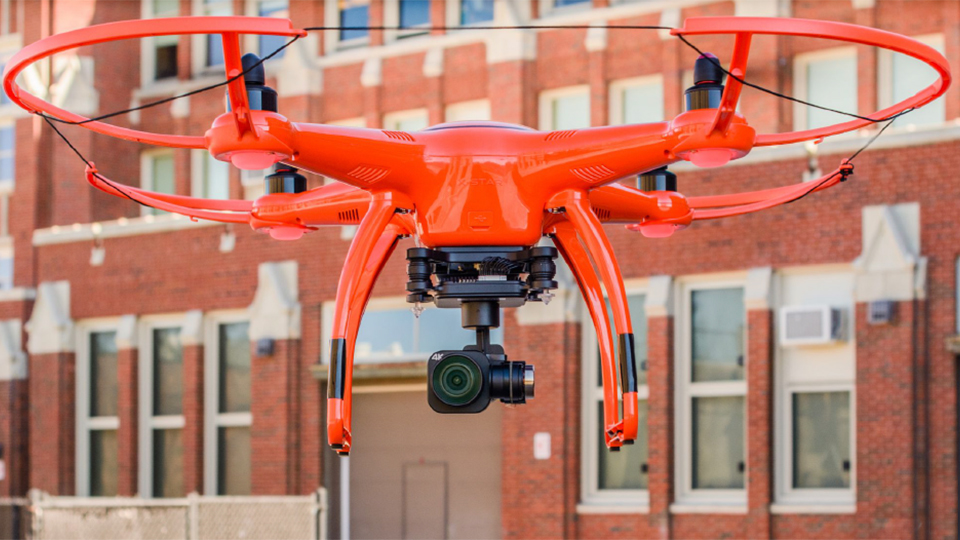Pass the Post, Please
By Tom Inglesby
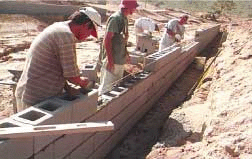 Many contractors have overlooked post tension masonry as a viable option in their kit of tricks. Let's see if we can break that cycle by giving you a crash course in PTM.
Many contractors have overlooked post tension masonry as a viable option in their kit of tricks. Let's see if we can break that cycle by giving you a crash course in PTM.
All construction today is based on cost versus benefits. When given the option, most owners and general contractors will opt for the least costly route to accomplish the objective. Architects might grumble but they, too, know that tough times require adjustments to the methods used in erecting their designs.
But many engineering and design specialist fail to understand the many options that are available, zeroing in on the ones that are the most familiar. It's a "Catch 22" situation ? when you limit the options, you force people to limit their experience and with a lack of experienced workers available, the less used approaches are used even less.
In many parts of the country, the building codes and the building code enforcers have been slow to adapt to changes in available building materials and construction techniques. It's the same story: Innovation breeds slowly when there are few experienced teachers to bring the new techniques to the forefront.
Companies that produce innovative techniques and technologies have a hard time changing the pattern of the officials who must sign off on a project. But that might be changing in one area ? post tension masonry ? due to the efforts of companies that are pioneering ways to bring this tool to the industry.
First, a little dictionary work.
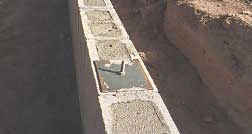 Post Tension Masonry: Implanting bolts the height of the wall that will be tightened to specific torque requirements, to bolt the wall to the footing. Post tension masonry can be either mortar jointed or dry-stacked block. The system tends to be used for low-rise buildings, retaining walls, fences and such.
Post Tension Masonry: Implanting bolts the height of the wall that will be tightened to specific torque requirements, to bolt the wall to the footing. Post tension masonry can be either mortar jointed or dry-stacked block. The system tends to be used for low-rise buildings, retaining walls, fences and such.
According to the Besser Company, a block manufacturer in Alpena, Mich., "Post-tensioning enables concrete to be used for its greatest advantage, compressive strength. By increasing the tension using post-tensioning tendons, the concrete masonry units are placed in compression. This limits the flexural action of the structure, thereby dramatically increasing its strength. Should the structure experience catastrophic forces such as earthquakes or hurricanes, the joints throughout will 'flex' slightly, radially distributing the force across the whole surface, and then lock-up as a single, solid interconnected mass."
Gero Marzahn, doctor of engineering and instructor at the University of Leipzig, wrote a paper in 1997 that discussed post tensioning as a viable alternative with dry stack masonry. He found that, like solid masonry, dry-stacked walls have a good resistance against compression but are slightly weak against shear, bending or tension. As dry-stacked masonry is not able to resist tensile stresses perpendicular to bed planes, cracks running along the bed planes will occur. Therefore the bed planes become planes of weaknesses under direct tension or flex.
If actions induce shear, bending or tension, additional compression stresses in vertical direction are needed. Obviously, any increase in axial load, either caused by additional dead load ? or better by pre-stressing ? will induce friction to sustain shear as well as reduce the maximum crack width due to bending or direct tension, respectively.
Therefore an action such as flexure that induces tension requires the dry-stacked masonry to be post-tensioned. Post-tensioning enhances the resistance to flexure as well as shear and tension. The governing criterion for post tensioning forces is the limitation of the crack width, besides the masonry strength in general. The ultimate load level mainly depends on the deformation of the entire wall between anchorages.
Masonry constructed from all types of units may be post-tensioned with tendons running through pockets formed in the masonry or cores in the units themselves. A lack of shear strength or bending resistance and the static system of most of the walls clearly favor the vertical axis of a wall to be the best direction for placing tendons. Commonly the tendons are located at the center of the wall. For special applications, such as basement walls, tendons might be tensioned at a constant eccentricity. For post-tensioned masonry, pre-stressing bars or monostrands are usually used.
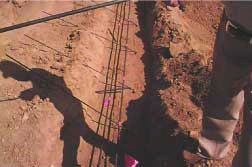 For grouted masonry structures, a bonded post-tensioning system might be used similar to concrete structures, but an unbonded system using monostrands offers major advantages in ungrouted and dry-stacked masonry structures both for constructability and durability reasons. Unbonded monostrands are provided now with an excellent double corrosion protection of the pre-stressing steel by grease and plastic ducts or simply by means of plastic coat.
For grouted masonry structures, a bonded post-tensioning system might be used similar to concrete structures, but an unbonded system using monostrands offers major advantages in ungrouted and dry-stacked masonry structures both for constructability and durability reasons. Unbonded monostrands are provided now with an excellent double corrosion protection of the pre-stressing steel by grease and plastic ducts or simply by means of plastic coat.
Post-tensioned, dry-stacked walls demonstrate how masonry can be turned into a new structural material that is suitable for a wide range of buildings as well as engineering works like bridges or shells.
Gary Otto, president of Proto-II Wall Systems, West Covina, Calif., presides over one of the major post tension masonry material supply companies in the U.S. The Proto-II system is awaiting final patent registration, indicating its special nature. Otto is quick to explain, "Proto-II employs post tensioning techniques and construction methods that had their beginnings in techniques long used in structural concrete. Applied to a freestanding masonry fence, for example, this design approach has created a system stronger than conventional walls while eliminating or down-sizing heavy and costly materials inside the wall. That means the overall cost is reduced. The combination of higher strength, lower price, system lightness, smaller footings and increased installation speed should make post tensioning very attractive to mason contractors."
Proto-II reports that approximately 700 miles of post tension masonry fencing were installed in the western states in 2001 alone. With about 100 licensed and certified installers in the country, Proto-II claims to have as much as 50 percent of the post-tension masonry market in California.
The California market, of course, is one that is highly seismic sensitive. Otto points to post tension's known value in this area, "It can withstand wind velocities in excess of 100 mph and is earthquake resistant even in seismic Zone 4. All this per the requirements of the Uniform Building Code."
He adds, "Builders and installers who have projects near the epicenter of the 1994 Northridge earthquake saw that durability and resistance first-hand. With over 100 miles of conventional walls suffering from looseness to complete failure, less than one percent of Proto-II installations were damaged by falling objects or ground fissures."
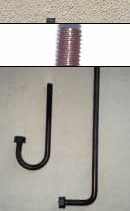 The Proto-II system uses ASTM C-90 masonry units with the usual smooth, split face, slump stone or other textures. However, where conventional block projects require large footings, rebar and grout, this post-tensioning system doesn't.
The Proto-II system uses ASTM C-90 masonry units with the usual smooth, split face, slump stone or other textures. However, where conventional block projects require large footings, rebar and grout, this post-tensioning system doesn't.
The footings, for example, are thinner and smaller, consuming less concrete. The high strength steel tension rod is hooked under a single horizontal rebar in the footing with a bearing plate, 0.5 inch nuts and a Proto-II DTI ? Direct Tension Indicator ? placed over the core of the block and on the top of the threaded rod below the cap course. Joint reinforcement is also used at specific locations. The rod, bearing plate and nut assembly is tightened to a specific torque rating that collapses the DTI to within plus or minus three percent of design tolerance. That brings the wall into compression and structural unity.
Each rod assembly and post tensioning operation is verified by an independent ICBO (International Conference of Building Officials) certified inspector as part of the quality control program Proto-II imposes on its installers.
While conventional masonry relies on rigid, passive grouting for reinforcement, the post-tensioning system uses an active mechanism of tensioned rod assemblies that are torqued to account for all losses that might occur during the life of the wall.
Post-tensioned walls are usually limited in height. However, the Proto-II system has been engineered for "pure post tension" heights of 13' 4" for 8" wide walls, 10' 0" for 6" and 6' 8" for 4" wide walls. They have built "hybrid" walls to 23' 6" so far.
A major concern has been the loss of strength of the rods due to corrosion. Otto responds, "There have been no system failures due to corrosion in the 14 years that we have marketed this system. There is no reason that the rods would corrode any more than a conventional wall. We provide a protective vertical cell inside the block for the tension rod so the rod is encased in reinforced concrete at the bottom and grouted over at the top of the wall. A recent report, NCMA Tek 14-20, discusses the idea of corrosion on tension rods and states that corrosion protection is only necessary in climates that exceed 75 percent mean annual relative humidity. We have opened up a Proto-II wall that was 12 years old and found no, repeat, no corrosion on the rods, plates or nuts."
As for reduced tension with age, from a structural engineering standpoint, the assembly is actually over-tensioned at construction, leading to additional safety factors. This loading takes into account tensioning losses such as rod stretch, block, mortar and concrete shrinkage.
With material and system design readily available, getting into post-tension masonry isn't hard. Systems such as Proto-II require certification of the installer and a licensing agreement due to its patented features, but that can be to the contractor's advantage. In a tough market, adding another certification and structural capability can only enhance your marketability.
About the Author
Tom Inglesby is a San Diego-based freelance writer whose work has appeared in numerous online and print publications. He is the winner of the Construction Writers Association's 2002 Boger Award for Special Reports.











